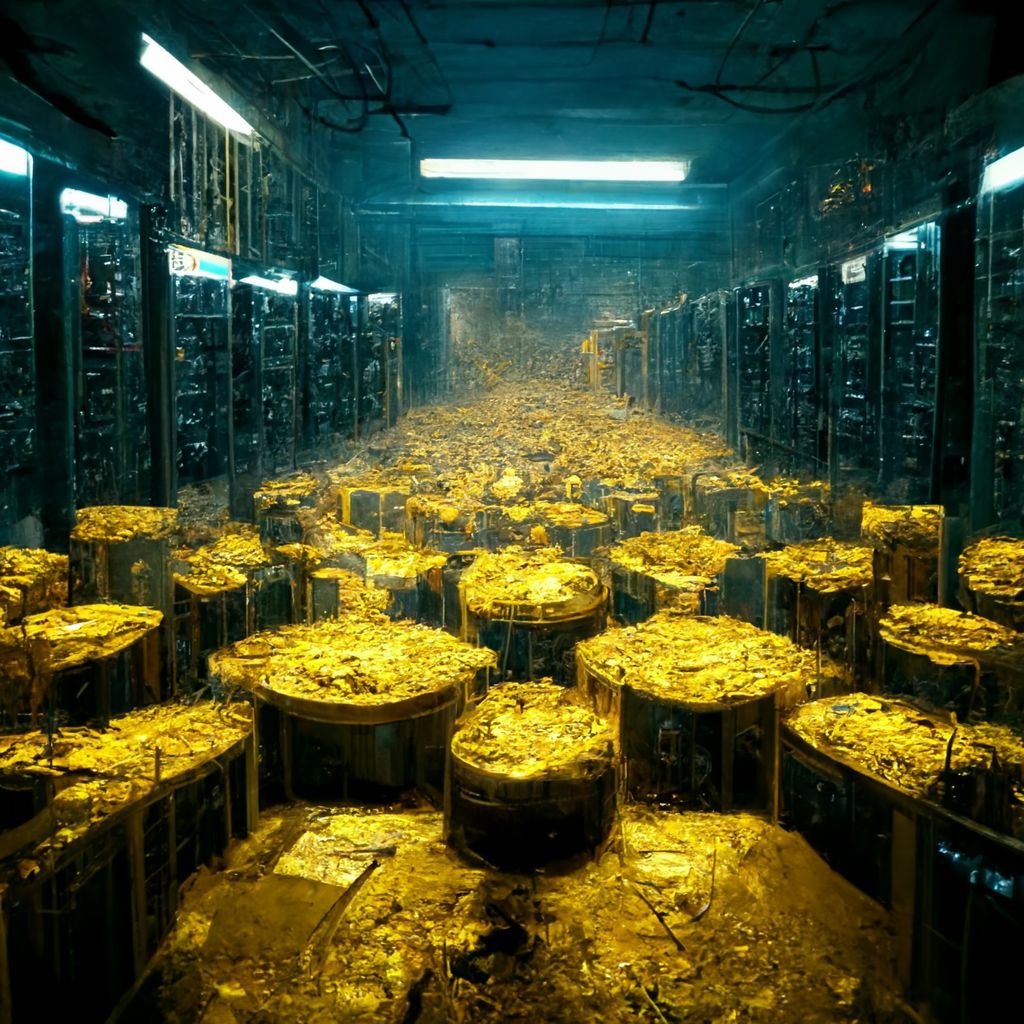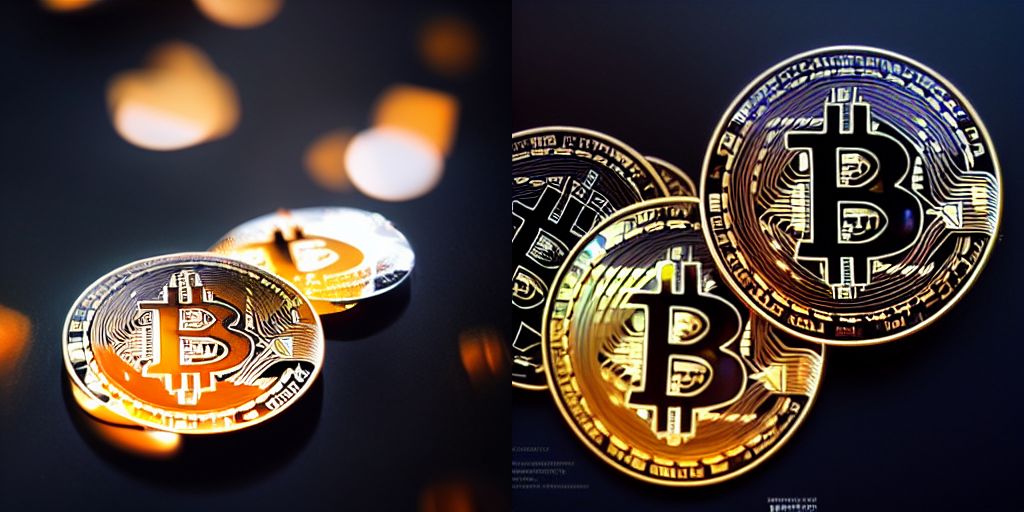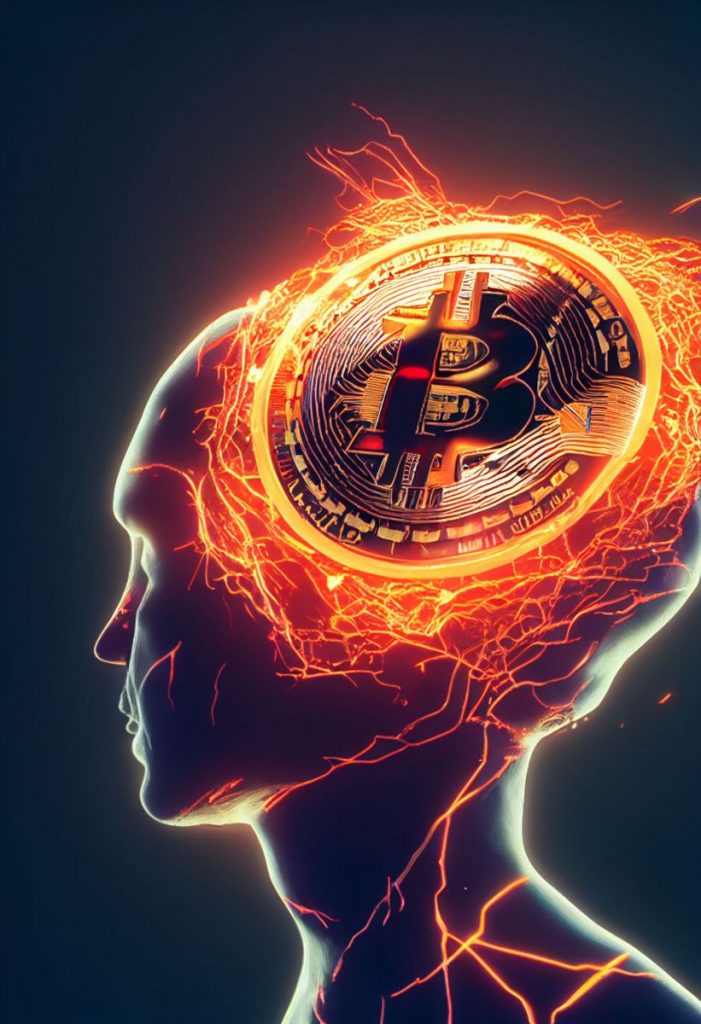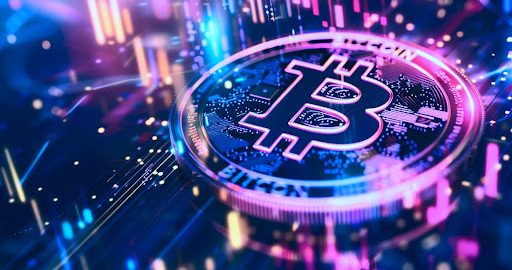Bitcoin Mining: An Introductory Overview for Aspiring BTC Miners
In Brief
Mining Bitcoin demands substantial resources and considerable computational power.
Mining plays a crucial role within the Bitcoin network, enabling both security and decentralization.
This article serves as your starting point for diving into the world of Bitcoin mining. We will explore the essential hardware and software you'll need, as well as the benefits of joining mining pools.

What is Bitcoin Mining?
Bitcoin mining involves validating transactions and adding them to a public ledger known as the blockchain. This system is reliant on miners to authenticate transactions, ensuring the integrity and reliability of the network. In return for their efforts, miners earn newly generated bitcoins as well as transaction fees.
To qualify for mining rewards, miners must deploy significant computational resources to solve intricate mathematical challenges, often referred to as proof of work. The complexity of these challenges adjusts automatically to ensure that a new block is appended to the blockchain approximately every ten minutes. This mining activity serves two key functions: it logs transaction details on the blockchain and introduces new bitcoins into the economy.

Since its inception in 2009, bitcoin Bitcoin has been mined using a wide variety of devices, ranging from basic personal computers to high-performance specialized rigs. The competitive nature of block addition has led to innovations in dedicated mining hardware, like application-specific integrated circuits (ASICs), which outperform standard devices in speed and efficiency. Presently, a majority of mining operations operate within large 'pools,' enabling miners to collaborate and improve their chances of receiving rewards.
As awareness and usage of Bitcoin grow, so does the necessity for transaction validation. This rising demand could potentially drive Bitcoin's price upward, as miners are compensated with freshly minted bitcoins and transaction fees for their contributions.
The Bitcoin mining process is quite resource-heavy and necessitates robust computational power. Consequently, mining has evolved into a highly specialized industry, with large-scale operations emerging to leverage economies of scale. These setups often utilize dedicated hardware, such as ASICs, and consume significant electricity, which can escalate operational costs.
How to Mine Bitcoin?
There are primarily two methods for mining Bitcoin: utilizing your hardware or opting for a cloud mining service.
Having your own mining hardware can be quite expensive and may not always guarantee profitable mining outcomes. Conversely, cloud mining services allow you to lease computing power from others and earn a share of the mined bitcoins. While this approach can be more economical, there are distinct risks tied to cloud mining that you should fully understand before diving in.
Miners generally fall into two categories: ASICs and GPUs. Both types are highly efficient and powerful, but they come with a significant financial investment. While GPUs (Graphics Processing Units) are commonly associated with gaming and graphic-intensive tasks, they can also effectively serve in Bitcoin mining.
If you're keen on mining Bitcoin using your personal hardware, it's crucial to make sure you possess the necessary tools. You'll need to install specific software that allows you to connect to a mining pool and begin the process.

Cloud mining services present an opportunity to utilize someone else's hardware in exchange for a share of the mined bitcoins. While this can be a lower-cost route, it comes with its own set of risks you need to consider beforehand.
One major risk associated with cloud mining is the potential for the service to suddenly go offline or declare bankruptcy. Additionally, you may not receive the full amount of bitcoins you have mined if prices drop or if the service lacks sufficient funds to compensate its users.
Before embarking on your Bitcoin mining journey, it's vital that you conduct thorough research and clearly comprehend the associated risks. Know how much capital you're willing to risk and your expectations for returns. Once you're informed, you can make an educated choice between personal hardware mining and cloud mining services, weighing the risks against potential rewards.
How Does Bitcoin Mining Work?
Mining holds a pivotal role within the Bitcoin framework, underpinning both security and decentralization. Miners earn newly generated bitcoins as a reward for confirming transactions and incorporating them into the blockchain. But what exactly drives the mining process?
The mining procedure for bitcoins is fundamentally straightforward. Miners are primarily tasked with validating transactions and incorporating them into the blockchain, receiving newly created bitcoins in return for their efforts.
To motivate miners to persist in validating transactions, the rewards offered must compensate for the costs of both electricity and equipment. Currently, the block reward stands at 12.5 BTC, providing miners with a strong incentive to keep supporting the network.

However, with an influx of new miners, the challenge of unearthing fresh blocks increases, resulting in reduced block rewards. This necessitates the establishment of robust incentives to continue mining, particularly as rewards diminish; otherwise, there’s a risk that miners may disengage, undermining the network's decentralization.
The Bitcoin protocol adjusts mining difficulty every 2016 blocks, roughly every two weeks, to discourage centralization. This ensures that miners remain incentivized to participate in the network, despite dwindling rewards.
While not every miner will hit the jackpot with new bitcoins, and rewards aren’t distributed uniformly, the larger the population of miners, the more secure and decentralized the network becomes.
In summary, mining is an indispensable element of the Bitcoin ecosystem, as it fosters security and decentralization through the validation and commitment of transactions to the blockchain, rewarding miners with newly minted bitcoins.
What You Need to Mine Bitcoin
Bitcoin mining Mining is the key to generating and distributing Bitcoin within a decentralized network. To start mining, you'll need specific hardware and software, which generally includes a powerful computer equipped with a dedicated mining program.
Finding suitable mining software tailored to your needs requires some exploration. With numerous options at your disposal, it’s essential to choose wisely. Once you've identified the right software, you'll need to download and install it on your computer, ensuring that it's configured properly to kick off your Bitcoin mining journey.

Your first step will be to join a mining pool, a collaborative group of miners pooling their resources together to enhance their chances of uncovering new blocks. After joining a pool, you'll be able to download the necessary software and begin mining.
However, make sure your computer is sufficiently powerful before starting. If it's not up to par, you might find Bitcoin mining impossible. One useful tool is “Bitcoin Tester,” which checks your computer's processing power to determine its mining suitability.
Once you’ve confirmed that your setup is powerful enough, it’s time to start downloading your mining software. You’ll typically encounter two types: graphical user interface (GUI) miners and command line interface (CLI) miners. GUI miners offer user-friendly interfaces but can be resource-intensive, while CLI miners are more efficient yet may have a steeper learning curve.
Once you've obtained the necessary software, go ahead and install it. After installation, launch the program and let it run in the background. It will initiate Bitcoin mining upon startup and continue until it’s stopped or terminated.
To verify that the program is functioning correctly, check your system’s Activity Monitor. If it’s not visible, try launching it manually from the Applications folder.
As the program operates, you can monitor its progress by looking at the 'hash rate,' which indicates the number of calculations it performs per second. A higher hash rate means faster Bitcoin mining.
To confirm that the program is indeed mining Bitcoin, consider using a service called “Block Explorer.” This tool will display all the blocks that have been mined along with their sizes.
Why Mine Bitcoin?
Bitcoin mining serves as a critical mechanism for securing the network and validating new transactions. This process can be undertaken by both individuals and businesses to earn rewards.
Mining is vital because it ensures all participants within the Bitcoin network agree upon the current state of the blockchain, effectively preventing double-spending. By validating transactions and competing to append new blocks, miners help maintain the network’s integrity and efficiency.

For those intrigued by the prospect of earning Bitcoin rewards, mining can represent an exciting and rewarding challenge. It offers a unique way to engage in cryptocurrency, along with the potential for financial gain when executed correctly. However, there are several important factors to weigh before embarking on this venture:
- Firstly, it’s crucial to recognize that mining consumes substantial electricity. If you’re not prepared to shoulder the associated energy costs, then diving into mining might not be your best move.
- Additionally, mining demands specialized equipment. ASIC miners are specifically engineered machines designed to efficiently mine Bitcoin. Most consumer-grade computers will struggle with mining software and may not yield profitable results.
- Lastly, remember that Bitcoin mining is a fiercely competitive field. To succeed, you’ll need to invest in high-quality hardware and join a reputable mining pool. Keeping all these considerations in mind will position you well on your path to earning Bitcoin through mining.
Types of Mining Hardware
When it comes to Bitcoin mining hardware, you’ll typically encounter three primary types: ASICs, GPUs, and FPGAs.
ASIC miners
ASICs, short for application-specific integrated circuits, are specially crafted machines that focus solely on Bitcoin mining. They significantly outperform other options like GPUs and FPGAs in terms of mining efficiency.
Pros:
Investing in an ASIC miner can be a smart move if you aim to profit from Bitcoin mining. However, be prepared to shell out a hefty sum, as a quality ASIC can run into the thousands of dollars. It's wise to consider if you're ready to make such a financial commitment.
Cons:
Unlike the more adaptable GPUs and FPGAs, ASIC miners are dedicated exclusively to mining tasks. Their singular purpose means they can't be repurposed for other applications, and they often produce substantial heat and noise. This could be a deal-breaker if you're looking for a more discreet mining solution.
GPU miners
GPU miners leverage the power of your graphics processing unit to mine Bitcoin. Originally designed for video gaming, GPUs can also effectively tackle mining tasks.
Pros:
In contrast to ASICs, GPU miners offer greater flexibility as they can serve multiple purposes beyond just mining. They typically come at a lower price point and are quieter and cooler compared to their ASIC counterparts.
Cons:
While GPU miners aren't as powerful as ASICs and their hashrate won't reach ASIC levels, they still represent a viable option for those seeking a more versatile mining solution.
FPGA miners
FPGAs, or field-programmable gate arrays, represent yet another category within mining hardware. What sets FPGAs apart from ASICs and GPUs is their ability to be repurposed for different uses after their mining days are over.
Pros:
Similar to GPUs, FPGAs provide the added benefit of versatility, allowing them to be utilized for various purposes once they've been employed in mining. Plus, they generally have a lower price tag than ASICs and generate less heat.
Cons:
While FPGAs may not reach the same efficiency levels as ASIC miners, they are still a worthy choice for those prioritizing flexibility in their mining operations.
How to Select the Right Hardware for Bitcoin Mining?
When diving into Bitcoin mining, it's crucial to contemplate three major types of hardware: CPUs, GPUs, and ASICs.
Technically, you can mine Bitcoin with a CPU or GPU, but this is not recommended as it yields low profitability. ASICs are tailored for mining Bitcoin and outperform both CPUs and GPUs in efficiency.

One critical aspect to keep in mind when selecting Bitcoin mining hardware is your electricity rate. ASICs tend to be power-intensive, so access to affordable electricity is vital for maximizing your profit margins.
The cost of the mining hardware itself is another significant consideration. ASICs can be quite pricey, making it essential to secure a favorable deal.
Lastly, you should look into the mining pool you plan on joining. Some pools deduct a percentage from your earnings as a fee, so find one with low costs to keep your profits intact.
Be sure to weigh aspects like electricity costs, hardware prices, and mining pool fees before you finalize your decision.
You may find that one hardware option aligns better with your specific needs over others. By evaluating all these factors, you can determine the most suitable hardware for your Bitcoin mining objectives.
How Profitable is Bitcoin Mining?
Determining the profitability of Bitcoin mining is complex due to various influencing factors. Electricity costs, hardware expenses, and mining difficulty all play a role in your potential earnings. Generally, if you have access to low-cost electricity and high-quality hardware, it can still be profitable to mine Bitcoin. However, as mining difficulty escalates and Bitcoin prices fluctuate, ensuring consistent profits will become increasingly challenging.

Another variable impacting profitability is whether you're mining solo or as part of a pool. Solo mining involves relying solely on your resources, whereas pool mining allows you to collaborate with other miners to enhance your chances of discovering new blocks and earning rewards. Generally, mining in a pool tends to be more lucrative than going it alone, though it carries a higher risk of not finding any blocks at all.
Ultimately, the profitability of Bitcoin mining hinges on numerous considerations. However, with the right combination of affordable electricity and effective hardware, you can still find success in mining.
Is Bitcoin Mining Legal?
Addressing the legality of Bitcoin mining can be tricky because regulations vary significantly from one country to another. In certain regions, Bitcoin mining is fully legal, while in others, it's deemed illegal. There are also numerous grey areas where rules may be ambiguous.
In many instances, countries adopt a relatively permissive approach towards Bitcoin mining. This leniency often arises from the substantial economic advantages that mining can bring to a region, dissuading governments from imposing strict regulations.
There have been notable occurrences of governmental actions against Bitcoin miners.

In China, Bitcoin mining faces a ban due to the country's overall prohibition on cryptocurrencies, yet enforcement is lax, allowing many citizens to continue mining.
In India, Bitcoin mining operates within the legal framework, though stringent regulations are in place. Miners are required to secure licenses from the Reserve Bank of India (RBI) prior to engaging in mining activities.
Iran has enacted a ban on Bitcoin mining tied to its anti-money laundering legislation. Nevertheless, some Iranian miners have found ways around these restrictions through the use of untraceable mining software.
While Russia hasn't officially outlawed Bitcoin mining, it has imposed several regulations, including the necessity for miners to obtain licenses from the Russian Federal Service for Financial Markets.
While Russia hasn't officially outlawed Bitcoin mining, it has imposed several regulations, including the necessity for miners to obtain licenses from the Russian Federal Service for Financial Markets.
These examples highlight various countries where Bitcoin mining is either prohibited or heavily regulated. It's vital to familiarize yourself with your country's laws before participating in any cryptocurrency-related ventures.
FAQs
Bitcoin mining is the essential process that verifies transactions on the Bitcoin blockchain. Miners receive BTC as a reward for their efforts in validating and adding new transactions to the blockchain, thereby helping to maintain the network's integrity.
Mining not only fortifies Bitcoin's security by confirming transactions and preventing fraudulent activities but also plays a crucial role in generating new bitcoins. This process ensures the legitimacy of each transaction that gets recorded on the blockchain.
MH/s (megahashes per second) and GH/s (gigahashes per second) are metrics used to measure mining speed. Essentially, the higher the number you see, the quicker a miner can extract Bitcoin or other cryptocurrencies.
A Bitcoin mining pool is essentially a collective of miners who join forces to mine Bitcoins. By pooling their resources, these miners enhance their odds of discovering blocks. Once a block is successfully mined, the corresponding reward is distributed evenly among all members of the pool.
A mining share represents a stake in a Bitcoin mining pool. By holding a share, you gain a right to a portion of the rewards generated by the pool. The price of shares typically reflects the anticipated profit from the pool—better-performing pools tend to be pricier.
Conclusion
Engaging in Bitcoin mining can be a lucrative method to earn cryptocurrency while supporting the valuable processes of the global network. However, keep in mind that mining is highly technical and involves substantial upfront investment for equipment.
Read related articles:
Disclaimer
In line with the Trust Project guidelines It should be emphasized that the information presented on this page is not meant and shouldn't be interpreted as legal, financial, investment, or any form of advice. Always invest only what you can afford to lose and consult an independent financial advisor if you have reservations. For further clarity, we recommend checking the terms, conditions, and support resources provided by the relevant issuer or advertiser. MetaversePost strives to deliver accurate and unbiased reporting, but market conditions can shift without notice.







